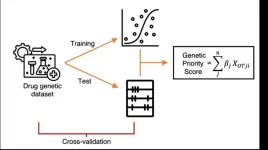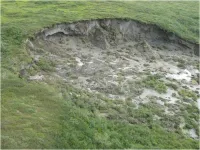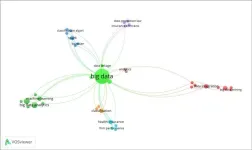(Press-News.org) PULLMAN, Wash. – As more states require employers to list compensation on job ads, a trending strategy to use very wide pay ranges could potentially harm recruitment, according to a Washington State University study.
The study, published in the Journal of Applied Psychology, found that participants in three different experiments were more likely to respond negatively to job ads with very wide pay ranges, viewing those employers as less trustworthy. Prior surveys have found that most people report they would trust organizations that include pay ranges in their postings more than those that do not, but as this study indicates, the way potential pay is presented also matters.
“It’s not just a choice between including a pay range or not – how compensation information is communicated matters, and at least in this study, having a very wide range might send a negative signal to potential applicants,” said study author Kristine Kuhn, a WSU Carson College of Business researcher.
How the ad explained the wide pay range also had an effect. In one of the experiments, participants were even less attracted to the organization if a very wide pay range included a statement that the offer amount would depend on the candidate’s qualifications. On the other hand, a more seemingly objective explanation that the offer would depend on the candidate’s geographic location tended to improve impressions of the employer.
Historically, most job postings in the U.S. did not include numerical pay information, but in recent years several states, including Washington, California, Colorado and New York, have enacted transparency legislation requiring many recruiters to list pay ranges – in part because there is evidence it increases equity.
Seeing an emerging trend in job postings with large pay ranges, Kuhn set up three experiments with different groups of participants to test the effect of this practice. In each experiment, some participants saw ads with wide salary ranges, such as a gap of $50,000 or more between the low and high point, while others saw ads with a narrower gap of around $10,000. The candidates then responded to questions about their perceptions of the organization posting the ad.
Participants in the initial experiment were college students; the second experiment surveyed 350 college graduates using an online panel, and the third experiment involved 245 participants with recent job search experience. Across all three experiments, on average ads with larger pay ranges evoked less favorable impressions of the employers than the narrower ranges.
In the last experiment which had an ad with a very large pay range of $58,100-$152,500, the participants provided written answers about how they viewed the employer. This revealed a high level of cynicism among some who called the wide pay range “dishonest,” “disingenuous” and “ludicrous.”
As one participant put it: “The large range implies that they tend to devalue their employees. I doubt they would actually offer anyone applying for this position a salary at the top range, regardless of credentials.”
There were some outliers, however, who viewed the large range as a positive, seeing the high top number as showing possible “room for growth without needing a promotion to another job.”
Ideally, advertising a pay range should streamline the recruiting process, Kuhn said, so the recruiter and applicant on are on the same page. However, some organizations, especially smaller ones, may not have well-defined job structures, so the large pay ranges in job ads may indicate they want to tailor the position to the candidates who respond.
“There probably is a goldilocks area of a just right pay range where it gives the employer some flexibility without sending negative signals to prospective applicants,” said Kuhn. “Also, while from a legal standpoint they may be required to advertise an expected pay range, employers and job candidates can still negotiate.”
END
Job ads with wide pay ranges can deter applicants
2024-01-03
ELSE PRESS RELEASES FROM THIS DATE:
What makes urine yellow? UMD scientists discover the enzyme responsible
2024-01-03
Researchers at the University of Maryland and National Institutes of Health have identified the microbial enzyme responsible for giving urine its yellow hue, according to a new study published in the journal Nature Microbiology on January 3, 2024.
The discovery of this enzyme, called bilirubin reductase, paves the way for further research into the gut microbiome’s role in ailments like jaundice and inflammatory bowel disease.
“This enzyme discovery finally unravels the mystery behind urine’s yellow color,” said the study’s lead author Brantley Hall, an assistant ...
Non-toxic quantum dots pave the way towards CMOS shortwave infrared image sensors for consumer electronics
2024-01-03
Invisible to our eyes, shortwave infrared (SWIR) light can enable unprecedented reliability, function and performance in high-volume, computer vision first applications in service robotics, automotive and consumer electronics markets. Image sensors with SWIR sensitivity can operate reliably under adverse conditions such as bright sunlight, fog, haze and smoke. Furthermore, the SWIR range provides eye-safe illumination sources and opens up the possibility of detecting material properties through molecular imaging.
Colloidal quantum ...
Complex, unfamiliar sentences make the brain’s language network work harder
2024-01-03
CAMBRIDGE, MA -- With help from an artificial language network, MIT neuroscientists have discovered what kind of sentences are most likely to fire up the brain’s key language processing centers.
The new study reveals that sentences that are more complex, either because of unusual grammar or unexpected meaning, generate stronger responses in these language processing centers. Sentences that are very straightforward barely engage these regions, and nonsensical sequences of words don’t do much for them either.
For ...
Novel genetic priority score unveiled to enhance target prioritization in drug development
2024-01-03
New York, NY [January 3, 2024]—Driven by the need for a better way to prioritize targets for drug development, the Icahn School of Medicine at Mount Sinai has led the development of a novel “genetic priority score” (GPS) that will integrate various types of human genetic data into a single easy-to-interpret score.
The findings were described in the January 3 online issue of Nature Genetics [DOI: 10.1038/s41588-023-01609-2].
Studies have shown that drugs have an increased likelihood of success in clinical trials when ...
Microbial awakening restructures high-latitude food webs as permafrost thaws
2024-01-03
Alaska is on the front lines of climate change, experiencing some of the fastest rates of warming of any place in the world. And when temperatures rise in the state’s interior—a vast high-latitude region spanning 113 million acres—permafrost there not only thaws, releasing significant amounts of its stored carbon back into the atmosphere where it further accelerates rising temperatures, but it decays. This decomposition has the potential to infuse above- and belowground food webs with carbon, which can affect ...
Bacteria load their syringes
2024-01-03
Disease-causing bacteria of the genus Salmonella or Yersinia can use tiny injection apparatuses to inject harmful proteins into host cells, much to the discomfort of the infected person. However, it is not only with a view to controlling disease that researchers are investigating the injection mechanism of these so-called type III secretion systems, also known as "injectisomes".
If the structure and function of the injectisome were fully understood, researchers would be able to hijack it to deliver specific drugs into cells, such as cancer cells. In fact, the structure of the injectisome has already been elucidated. ...
Greener and feasible production: Enzymatic methods for mono- and diacylglycerol synthesis in the food industry
2024-01-03
MAGs, predominantly in 1(3)-MAG form, and DAGs, with 1,3-DAGs as the more stable isomer, are crucial in food, cosmetic, and other industries. While MAGs are vital emulsifiers, comprising 75% of global production, DAGs are known as functional cooking oils that can reduce body fat and serum TAGs. However, their natural concentration in oils is low, prompting extensive research into their chemical and environmentally-friendly enzymatic production.
Recently, a review published in the Grain & Oil Science and Technology journal on 2 November 2023, has shed light on the advancements in enzymatic production methods with special efforts on practical and ...
Re-calibrating the sail plan for Native Hawaiians, Pacific Islanders in ocean sciences
2024-01-03
In Hawaiʻi and across much of Oceania, Pacific Islanders celebrate the connections between their islands and the ocean that surrounds them. “As descendants of the ocean, the dearth of Native Hawaiians and Pacific Islanders (NHPI) in ocean science seems inconsonant,” writes a team of authors that includes University of Hawai‘i (UH) at Mānoa faculty, students, and alumni in an article in a special issue of the journal Oceanography, “Building Diversity, Equity, and Inclusion in the Ocean Sciences. The authors ask, “Where are all our island people in the ...
Monetized evaluation of landscape resources of national parks based on the willingness to pay of multiple interest groups
2024-01-03
In China, national parks represent the country’s most unique natural landscapes. Scientific evaluation of landscape resources is significant for preserving the authenticity and integrity of national parks. Taking Qianjiangyuan National Park System Pilot Zone as an example, this research investigated the willingness of internal group (residents and administrative staff) and external group (tourists) to pay for a hypothetical market project based on the pilot zone via Contingent Valuation Method to acquire the monetized value of landscape resources in the national park, and applied Logistic Regression to analyze the influencing factors. The results show ...
How big data transforms the insurance sector
2024-01-03
In 2022, the insurance industry made a whopping USD 6 trillion globally—more than the entire economy of big countries like Japan and Germany. A new study, published in The Journal of Finance and Data Science, looked at how technology, especially big data, is shaking things up in insurance. Big data means using a lot of information to make better decisions.
The study found that by using big data, insurance companies can understand risks better, offer fair prices and keep customers happier.
“What's surprising is how fast insurance companies are jumping on the big data bandwagon,” says first ...







